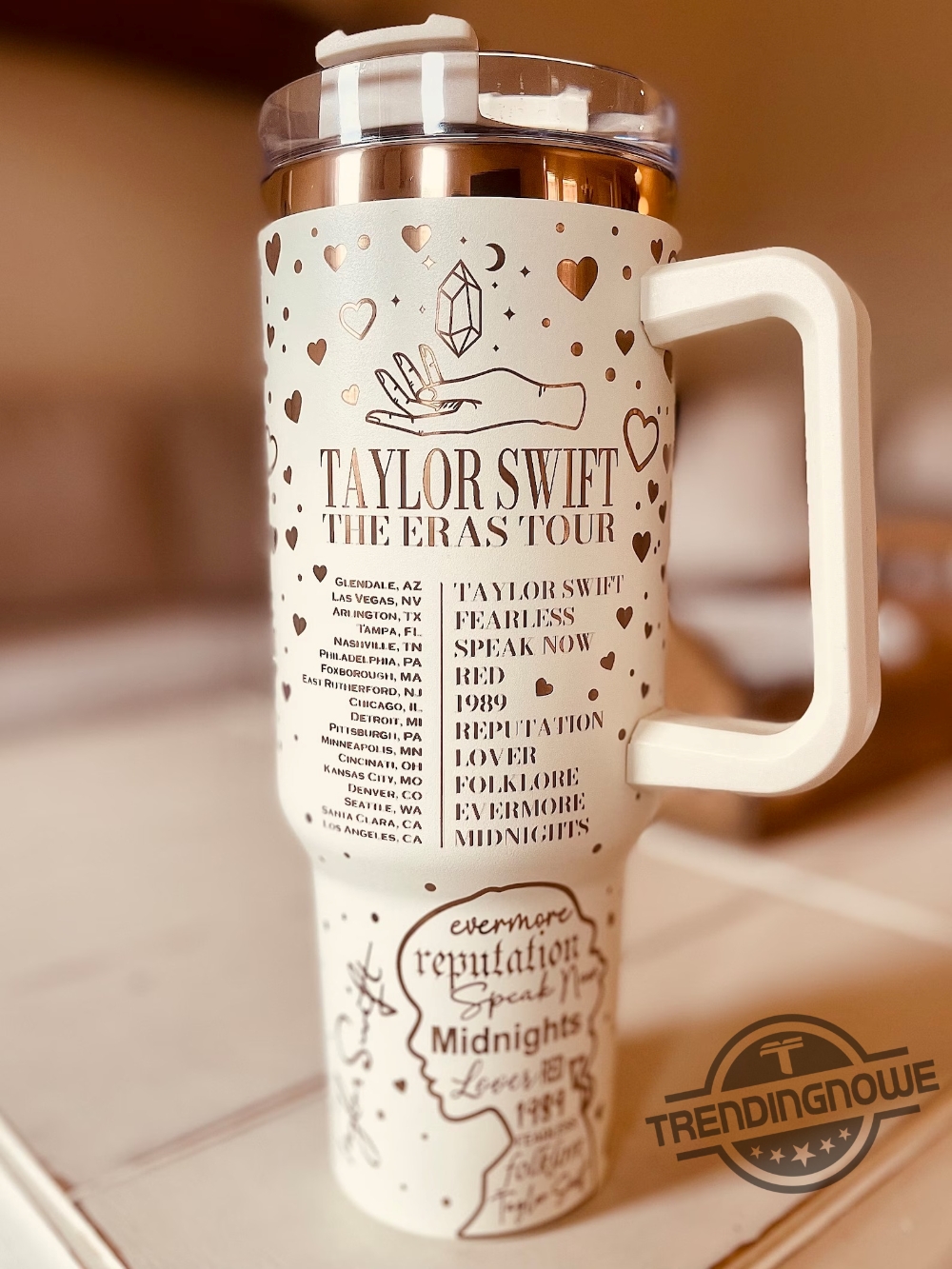Can two titans of vastly different worlds one a global music sensation, the other a symbol of ice hockey supremacy truly share common ground? The answer, surprisingly, is a resounding yes, and the convergence of Taylor Swift and the Stanley Cup offers a compelling narrative of shared values, cultural impact, and future potential.
Taylor Swift's influence extends far beyond the realm of music. Her ability to craft deeply personal narratives through song has resonated with millions, transforming her into a cultural icon. Simultaneously, the Stanley Cup, the oldest professional sports trophy in North America, embodies the spirit of competition, teamwork, and enduring legacy. This exploration delves into the fascinating intersection of these two powerful forces, revealing a surprising symbiosis.
Taylor Swift, born December 13, 1989, in Reading, Pennsylvania, has redefined the landscape of modern music. Her journey began with a self-titled debut album in 2006, marking the genesis of a career that would shatter records and influence generations. This early foundation in country music provided a springboard, allowing her to transition seamlessly into the pop genre and achieve global dominance. Her evolution as an artist, songwriter, and businesswoman is a testament to her unwavering dedication and creative vision.
| Attribute | Details |
|---|---|
| Full Name | Taylor Alison Swift |
| Date of Birth | December 13, 1989 |
| Place of Birth | Reading, Pennsylvania, USA |
| Occupation | Singer-Songwriter, Producer, Actress, Director |
| Genres | Pop, Country, Folk, Indie Pop |
| Years Active | 2004present |
| Record Label(s) | Big Machine Records (20062018), Republic Records (2018present) |
| Notable Albums | Fearless (2008), 1989 (2014), Reputation (2017), Lover (2019), Folklore (2020), Evermore (2020), Midnights (2022) |
| Awards & Recognition | 14 Grammy Awards, 40 American Music Awards, 29 Billboard Music Awards, numerous others. Billboard's Woman of the Decade (2010s). |
| Website (Reference) | Taylor Swift Official Website |
The Stanley Cup, inaugurated in 1893, stands as a symbol of hockey excellence. Awarded annually to the National Hockey League (NHL) champion, it represents the culmination of relentless effort, strategic teamwork, and unwavering resolve. Its rich history and enduring cultural significance have elevated it to an iconic status in the sporting world. The trophy itself, a tangible embodiment of victory, carries the weight of tradition, aspiration, and the countless stories of triumph and perseverance etched upon its surface.
Named after Lord Stanley of Preston, the Governor General of Canada, the Stanley Cup's physical form has evolved over time, mirroring the changing landscape of the sport. However, the essence of the trophy its representation of dedication, achievement, and the pursuit of glory has remained constant. Each year, teams across North America vie for the opportunity to etch their names onto its hallowed surface, perpetuating a legacy that transcends generations and captures the imagination of hockey fans worldwide. The quest for the Stanley Cup is more than just a competition; it's a cultural phenomenon, woven into the fabric of sporting history.
The seemingly disparate worlds of Taylor Swift and the Stanley Cup unexpectedly share several fundamental values. Both, in their respective domains, represent the pinnacle of achievement and serve as beacons of inspiration for millions. This shared essence of excellence is a critical point of connection, fostering a deeper understanding of their cultural impact.
- Bad Time At El Royale
- The Bible Verse About Tattoos
- Stephen Caffrey Wife
- %E3%82%B8%E3%83%A5%E3%83%AA%E3%83%BC %E3%82%A4%E3%82%A8%E3%83%BC%E3%82%AC%E3%83%BC
- Wer Ist Loredana
Taylor Swift's meteoric rise to fame mirrors the dedication required to win the Stanley Cup. Her relentless pursuit of musical excellence, her commitment to honing her craft, and her unwavering focus on connecting with her audience these are echoes of the same qualities that define the champion hockey teams. The drive to create, to perform, and to excel, whether on the stage or on the ice, is a driving force behind their respective successes.
Teamwork and collaboration are not merely buzzwords in either sphere; they are the cornerstones of success. Taylor Swift's songwriting process, often involving collaborative efforts with other artists and producers, exemplifies the power of collective creativity. Similarly, in hockey, success hinges on the ability of players to function as a cohesive unit, supporting one another and working towards a shared objective. The shared understanding of teamwork underscores the collaborative spirit that drives both the music and sports industries forward.
The role of passion and perseverance is equally critical. Swift's resilience in the face of challenges and her unwavering commitment to her artistic vision, despite industry changes, mirrors the grit and determination required of NHL players. The ability to bounce back from setbacks, to overcome adversity, and to keep striving for greatness these are the attributes that bind Swift and the Stanley Cup together.
Taylor Swift's concert tours, known for their elaborate staging and energetic performances, have begun to incorporate elements that resonate with sports culture. This blend of music and athleticism creates a unique and engaging experience that appeals to a wide audience, demonstrating the potential for crossover appeal.
Swift's concerts often feature pyrotechnics, elaborate stage designs, and interactive elements that mimic the excitement of live sports events. These visuals, combined with the sheer energy of her performances, create a sense of spectacle that mirrors the fervor and excitement of a hockey game. This integration of visual and auditory elements enhances the experience for both music fans and sports enthusiasts, further expanding Swift's reach and influence.
Fan engagement is absolutely central to the success of both Taylor Swift and the Stanley Cup. Swifties, the passionate fanbase surrounding Taylor Swift, are renowned for their unwavering loyalty and support. Likewise, hockey fans display an intense devotion to their teams, creating a shared sense of community and belonging.
Both Swifties and hockey fans form vibrant communities centered around shared interests, fostering a strong sense of identity and belonging. Online platforms and social media channels play a crucial role in this process, connecting fans from all over the world and enabling them to express their passion. These online spaces provide opportunities for interaction, discussion, and the sharing of experiences, strengthening the bonds that unite these devoted followings.
Live events whether Taylor Swift concerts or Stanley Cup playoff games provide unique opportunities for fans to come together, creating lasting memories and deepening their connection to their favorite artists and teams. These shared experiences foster a sense of camaraderie and belonging, enriching the fan experience and solidifying their commitment.
The confluence of Taylor Swift's fame and the Stanley Cup's prestige holds considerable significance from a business perspective. Both generate substantial revenue streams through merchandise sales, ticket revenues, and media rights, contributing significantly to the economic vitality of their respective industries.
Taylor Swift's global tours have a substantial impact on local economies, attracting tourists and boosting the hospitality sector in the cities she visits. Similarly, NHL games, including the Stanley Cup playoffs, drive economic activity by drawing crowds and stimulating local businesses. Sponsorships and strategic partnerships further enhance the financial impact of these events, driving economic expansion and creating new opportunities for businesses and individuals.
Media coverage of both Taylor Swift and the Stanley Cup highlights their immense popularity and influence, demonstrating the power of celebrity and sporting achievement. Journalists and analysts regularly examine the intersection of music and sports, generating widespread interest and sparking ongoing conversations.
News outlets consistently feature stories about artists collaborating with sports leagues, drawing attention to innovative partnerships and unique initiatives. Social media platforms amplify these stories, reaching global audiences and fueling public interest. Fans enthusiastically consume content that bridges their favorite interests, showcasing the effectiveness of cross-industry collaborations.
Throughout history, music and sports have often converged to create unforgettable moments that leave a lasting impact on popular culture. These collaborations, from halftime performances to concerts at sporting events, have become cultural milestones, demonstrating the creative potential of cross-industry partnerships.
Taylor Swift's performances at sporting venues, the Super Bowl halftime shows, and the NHL's integration of music at games and events are prime examples of this phenomenon. These moments not only entertain but also inspire future collaborations, pushing the boundaries of creativity and innovation. These cross-overs can introduce new audiences and amplify existing fans. The power of music and sport combined can be truly groundbreaking.
The future holds significant promise for collaboration between Taylor Swift and the Stanley Cup. As both entities continue to evolve and adapt to changing trends, their shared values and vast fan bases create ideal conditions for groundbreaking partnerships. The possibilities for creative synergy are exciting and potentially very lucrative for both entities.
Taylor Swift could potentially perform at NHL events. This approach would introduce her music to new audiences and enhance the fan experience. Additionally, joint marketing campaigns could leverage the combined strengths of both brands, creating beneficial opportunities for growth and expansion. Interactive experiences such as virtual concerts or fan events could revolutionize fan engagement, offering immersive experiences.


